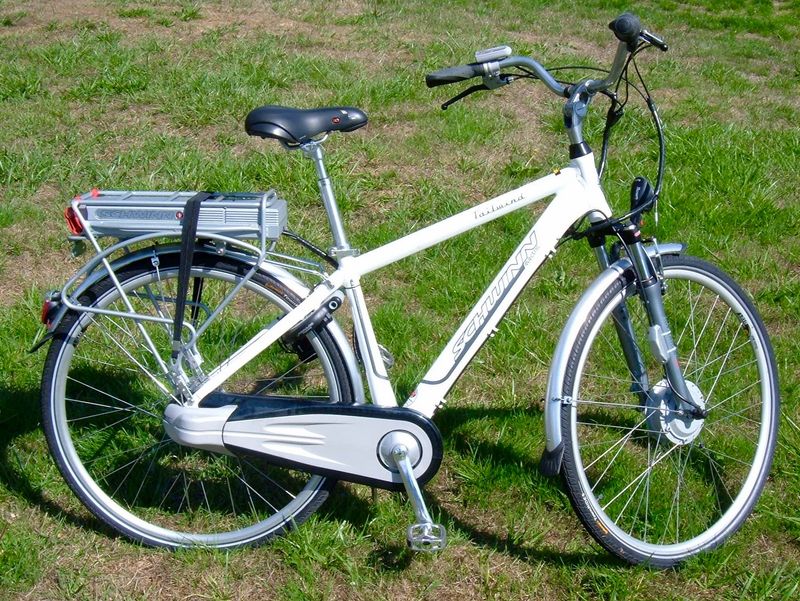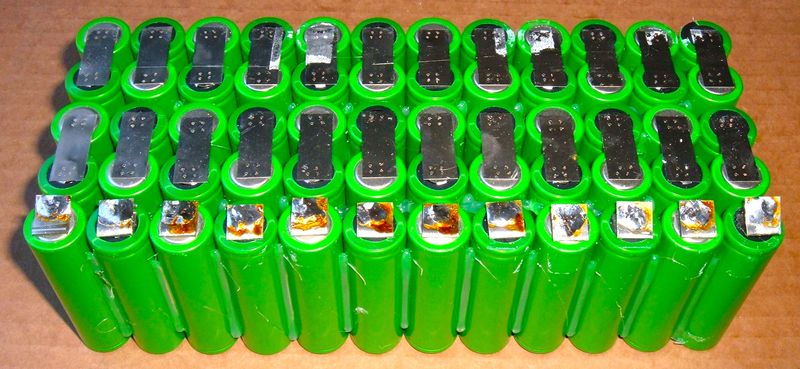You’re looking at a shiny new ebike on some indiekickbay website. Is it any good?
Good question! That depends on what you’re about to do with it! Play with it on the weekends in the summer, or ride it to work every single day, wear it out, repair it, and keep it rolling?
My bias here is clear: I commute on an electric bike, love them for that task, and want to see more commuter-ready electric bikes on the market.
There are an awful lot of electric bikes on the market today - they cover a huge amount of ground, from little 250W assist units to things like the Stealth Bomber and a lot of homebuilt ebikes that are full on electric motorcycles with pedals. However, some of them are better suited to commuting, and some are better suited to being weekend toys.
This is a list of things to consider when looking at an ebike, and might help you decide if it’s better suited to being a toy or a daily use tool. I’m deliberately not listing brands or specific projects here, because I expect an endless stream of these things, and I don’t want to be responsible for keeping up with them. I’d rather be riding. :)
And, don’t get me wrong - there’s nothing wrong with a toy. It’s fun on the weekend, and you may very well be looking for something like this - but if you try to use it as a daily commuter, you might find yourself wanting a lot more.
Interested in things to consider? Read on!
Toy
Your default assumption about some new crowdfunded bike should be that it’s a toy. It’s sad, but (so far) true. Most of the bikes that have come across the crowdfunded ebike path are questionable, at best. It’s really sad, but it’s true.
Some signs you might be dealing with a toy:
- Incredibly optimistic range numbers, with no data to back them. If it’s cheap, and it’s claiming a 50+ mile range, the manufacturer is probably full of crap. You can ride any electric bike any distance, if you don’t use the motor. That’s not what people want to know.
- A significant lack of battery pack data and numbers. You want, at a minimum, voltage and amp-hours of capacity (or the combined value, watt-hours - calculated by multiplying voltage and amp-hours). A 100-150Wh pack is tiny, a 350-500Wh pack is reasonable, and a 800+Wh pack is huge.
- A focus on charge time instead of saying anything else about the battery pack. Hint: It just doesn’t matter. Unless you’re running a delivery bike fleet. Then you still want something quality, not cheap.
- No mention whatsoever of the battery chemistry. This makes a huge difference in terms of longevity and safety of the pack. ”Lithium ion battery” is not a chemistry specification. Also, if it’s using anything that’s not lithium (lead acid, NiMh, etc) - just stay away entirely.
- Complete lack of lights and fenders. A commuter needs these. A sticker saying “Do not ride at night” is a poor substitute.
- Only one frame size offered, or no sizes even listed.
- Videos that show you doing things you’d never do - riding down the beach in the sand, climbing the side of a mountain, etc. If you actually intend to do these things, that’s fine, but most people aren’t going to be commuting on a beach. If you are, I slightly hate you. Also, most bikes that show these things in videos seem to be poor at actually doing them once shipped.
- Little or no mention of the hardware used for the “bicycle” part of it - which probably means it’s the cheapest things they can find.
- It uses rim brakes. In 2015, this means you’re focused purely on cost. Good luck stopping on a downhill in the rain.
Tool
On the other hand, there do exist some very solid looking ebikes that, at least as advertised, appear to be quite solid. They tend to be rather less over the top in advertising, and usually have a lot more detail offered about the bike and the details of it.
- The battery pack will be well defined. Voltage, amp-hours, and ideally some mention of the chemistry (LiCo, LiFePO4, LiMn, etc). If it’s anything other than LiCo, this is a plus - the energy density is lower, but the cycle life is longer, which means you won’t have to replace your pack as soon.
- The range numbers are reasonable. You can safely ballpark 15Wh/mi for pedal assist, and 25-35Wh/mi for throttle. Bonuses if the numbers are shown for different weights/road conditions (hilly terrain takes more power than the flats). If the battery pack and the specified range numbers look about right based on this value, it’s a good sign that the range isn’t radically inflated.
- Lights & fenders are included. You’ll really want these if you’re commuting, and someone that includes them is very likely considering commuter use in the design. Be sure the fenders are useful, though - there have been bikes with very “artsy” steamed wood fenders that were radically better at looking good than at keeping the rain off your back. Tightly fitted, curved fenders that drop down quite far are what you want, at least if it rains. If it doesn’t rain where you are, it doesn’t matter.
- Multiple frame sizes. Bizarrely, a 5’1” woman needs a different frame size than a 6’5” man. If the bike comes in multiple sizes, this is a good indication that someone who actually understands bicycles is involved and has thought it through. The frame fit is slightly less important with an electric bike, but it still matters, especially if you’re going to ride it every day.
- It’s a good sign when the videos show commuting, preferably in the rain, or on hills. This matters if you’re going to be commuting in the rain on hills! We can’t all live in Southern California, where it’s 70 and sunny all year…
- The manufacturer of the bicycle components is specified. If they’re willing to specify the manufacturer of the shifters & such, it probably means they’re not generic garbage.
- The bike uses disk brakes. Preferably, hydraulic disk brakes, if you’re in a hilly area.
- Any mention of armored tires, heavy duty tubes, slime in the tubes, or other anti-flat-tire systems. A flat tire on a commuter really sucks, and with a motor, the weight of hauling a very robust tire/tube system around doesn’t matter.
Not all of this may matter to you, but it’s something to keep in mind when you’re considering buying a bike from one of these places.
If it’s a daily commuter you’re looking for, you want something that is going to be easy to maintain. Bicycles don’t last forever without maintenance, and something well built will also be easier to maintain in the long run (through a combination of less maintenance required and easier-to-find parts).
And if you’re looking for a cheap toy bike to play with on the weekends, that’s fine! Just don’t expect something reliable, maintainable, or particularly good at being a daily rider.
What other things have you found that help you separate the awesome daily commuters from the once-a-month rubbish?
Comments
Comments are handled on my Discourse forum - you'll need to create an account there to post comments.If you've found this post useful, insightful, or informative, why not support me on Ko-fi? And if you'd like to be notified of new posts (I post every two weeks), you can follow my blog via email! Of course, if you like RSS, I support that too.








